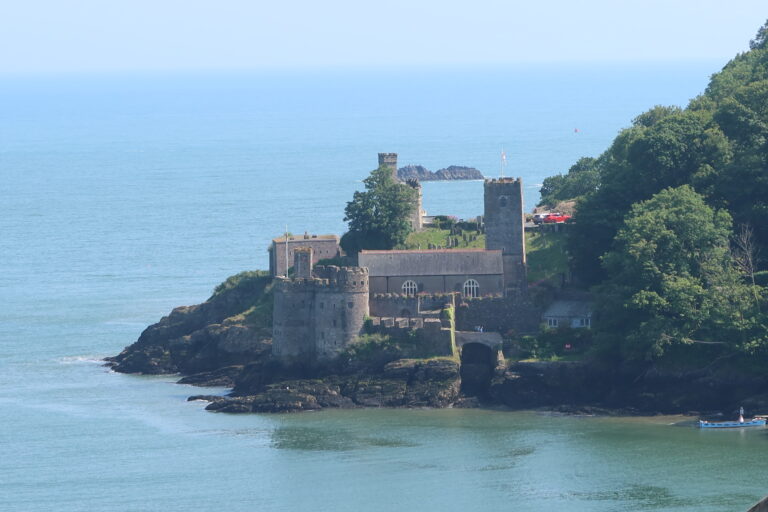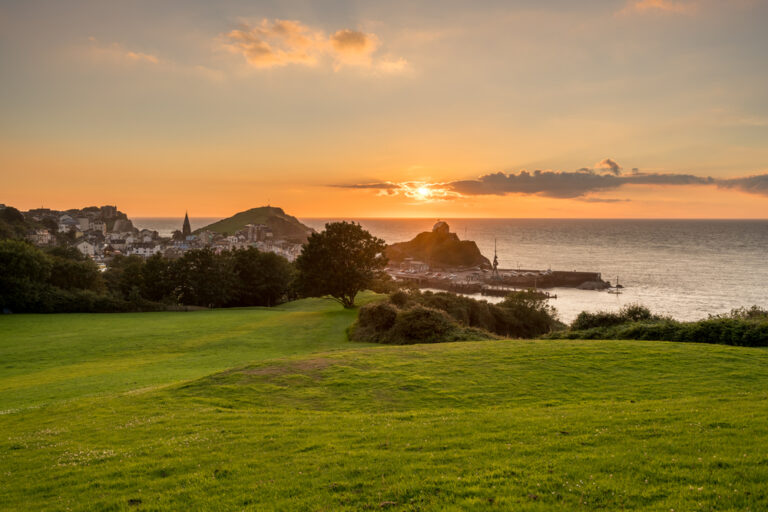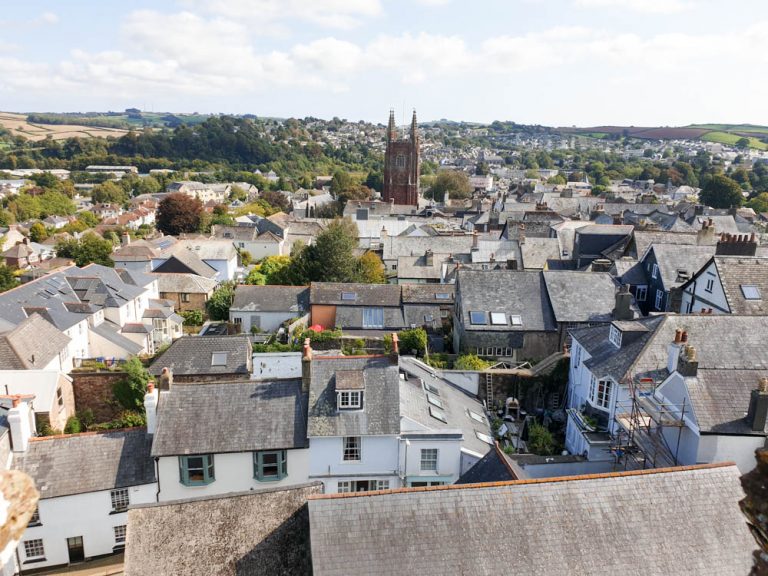36 Incredible Things to do in Dartmoor National Park, Devon
There are so many things to do in Dartmoor – it’s one of the most exciting and enthralling places in the whole of the UK.
But, if you’re just starting to plan a trip here, you might be a bit perplexed. What are the best attractions in Dartmoor? What hikes are there? What should you see and do when you’re there?
Well, with this handy guide, you won’t need to worry too much! I live close to Dartmoor in Devon and have visited hundreds of times. So I created this blog post, where I’ve listed all of the best things to do in Dartmoor National Park and included them in categories.
So, if you don’t really want to walk but love the idea of exploring some of Dartmoor’s best nature, you can go to my nature attractions in Dartmoor section.
Or, you can look at the short walks in the Dartmoor section, or you can check out the best Dartmoor towns and villages!
About Dartmoor National Park
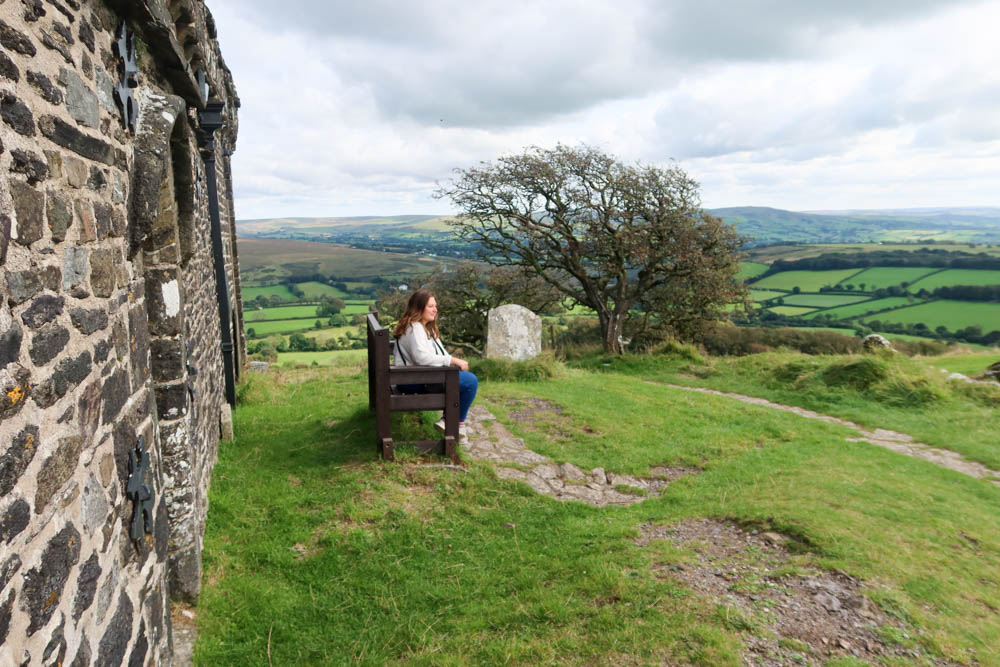
With sweeping moorland that looks like it continues forever, rugged tors weighed down by ancient history and magical woodland – some of which is classed as a temperate rainforest – Dartmoor is an incredible Devon destination.
Dartmoor National Park occupies 954 km² (368 square miles) in South Devon. Spanning from Tavistock in the west to near Exeter in East Devon, it’s the largest national park in England.
Parts of it are the only places in England where you can legally wild camp, and you can roam anywhere you want.
There are also countless historical attractions and lookouts with panoramic views.
You could easily spend a week here; ticking off everything on this list of the best Dartmoor attractions, prettiest villages, best walks and more!
Things to do in Dartmoor
Visit Darmoor’s mythical tors
Dartmoor is famous for its tors, rocky outcrops that stand abruptly against the rolling moor.
There are more than 160 tors in the national park; so you definitely will need more than one trip to see them all! Here are some of the best Dartmoor tors to see while you’re here.
Saddle Tor
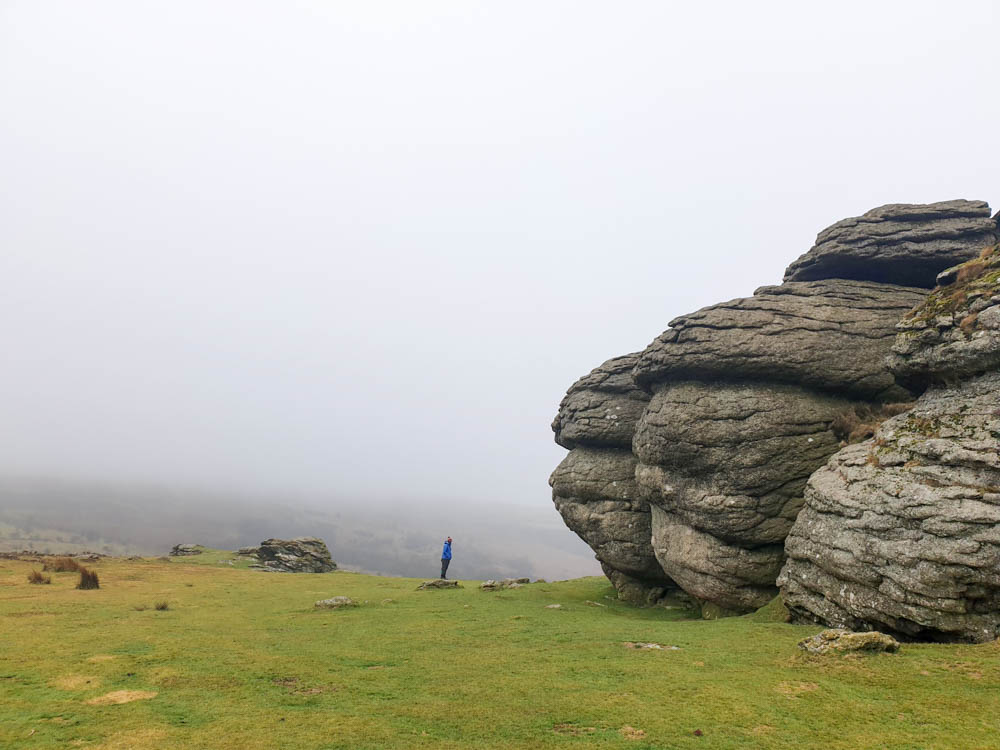
Located right by the road, Saddle Tor is an easy place to visit in southern Dartmoor.
Consisting of two large granite boulders on top of a dramatic hill, Saddle Tor is named so because it looks like a saddle from some angles.
It’s easy to park at Saddle Tor – you can pull into one of the small car parks on the side of the road and from here, just walk any way you’d like up to the top of the hill.
On a clear day, you’ll enjoy fantastic views over the eastern side of Dartmoor.
(As you can see, the day we visited in January wasn’t so clear!)
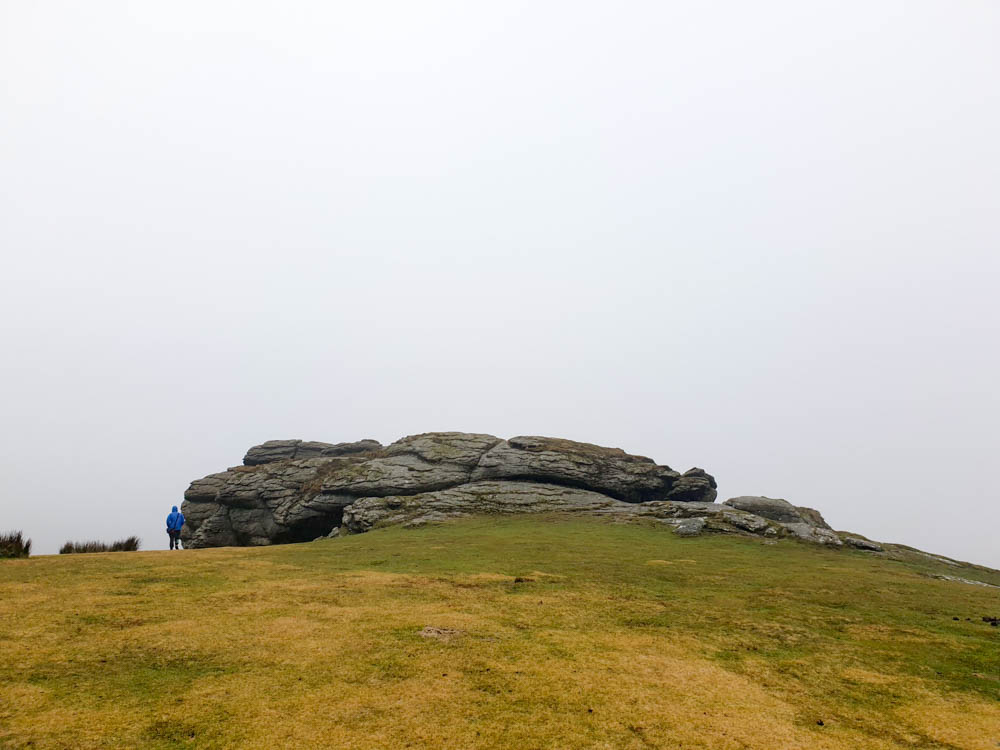
Hound Tor
Hound Tor is another one of the most popular tors in Dartmoor.
It has lots of weathered granite rocks at the summit, and to its southeast, is a deserted medieval village called Hundatora.
It consisted of four Dartmoor longhouses and the land was built in the bronze age.
There’s not much to see now – just a few ruinous foundations of buildings – but for anyone who’s interested in archaeology and history, it’s a must-visit.
Haytor Rocks

Just a stone’s throw from Saddle Tor sits Haytor Rocks (it’s really easy to visit them both at the same time).
Also known as Hey Tor, these rocks have an elevation of 457 metres, offering some impressive views from the top.
It’s a popular spot for climbing, and on a clear day, you’ll take in incredible far-reaching views over the entire moorland.
It can be very busy, particularly in the summertime, so I’d recommend visiting early in the morning to try and catch a bit of solitude!
Haytor Quarry is also nearby and worth a visit.
Brentor Church

Brentor Church is one of the best tors on the western edge of Dartmoor.
It takes about 20 minutes to climb the hill, and you’ll enjoy spectacular views from the top.
It’s one of the few tors in Dartmoor that wasn’t made of granite – instead, it was formed from lava over 350 million years ago.
The church is a very spiritual and legendary place.
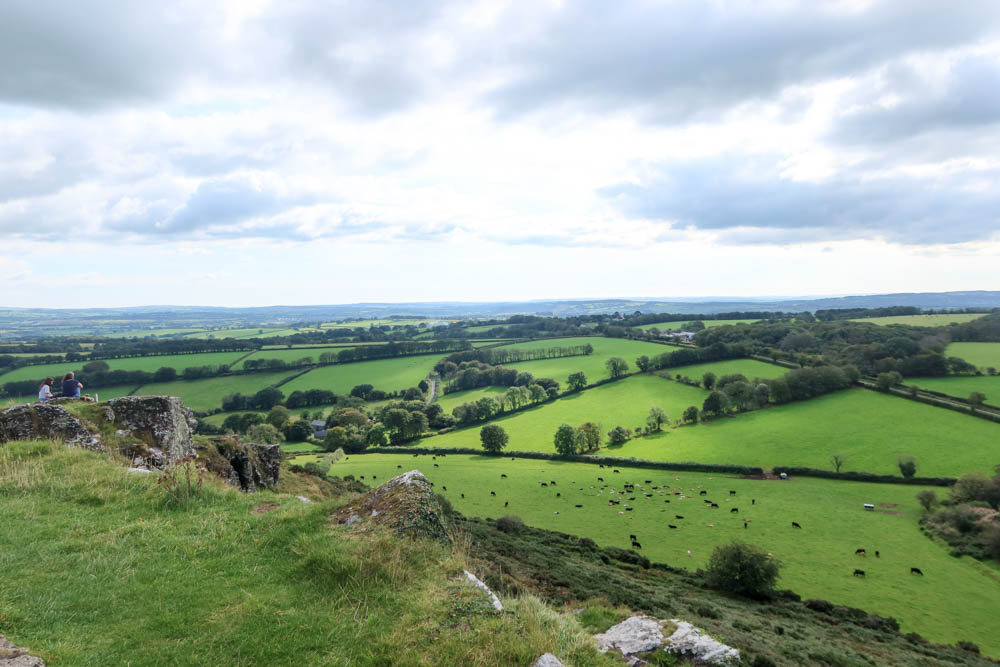
Leather Tor
With views over to Burrator Reservoir, Leather Tor is one of the most dramatic sights of Dartmoor.
Take in the jagged rocks as you climb up, with stunning views across the western side of the park.
You can visit Leather Tor on its own, or walk around Peek Hill and Sharpitor, which is a circular route.
Pew Tor
Pew Tor has one of the largest collections of rocks at its summit. This means it’s a fantastic outdoor playground, perfect for anyone who wants a climb!
It’s located in West Dartmoor, about halfway between Princetown and Tavistock.
Explore woods and waterfalls
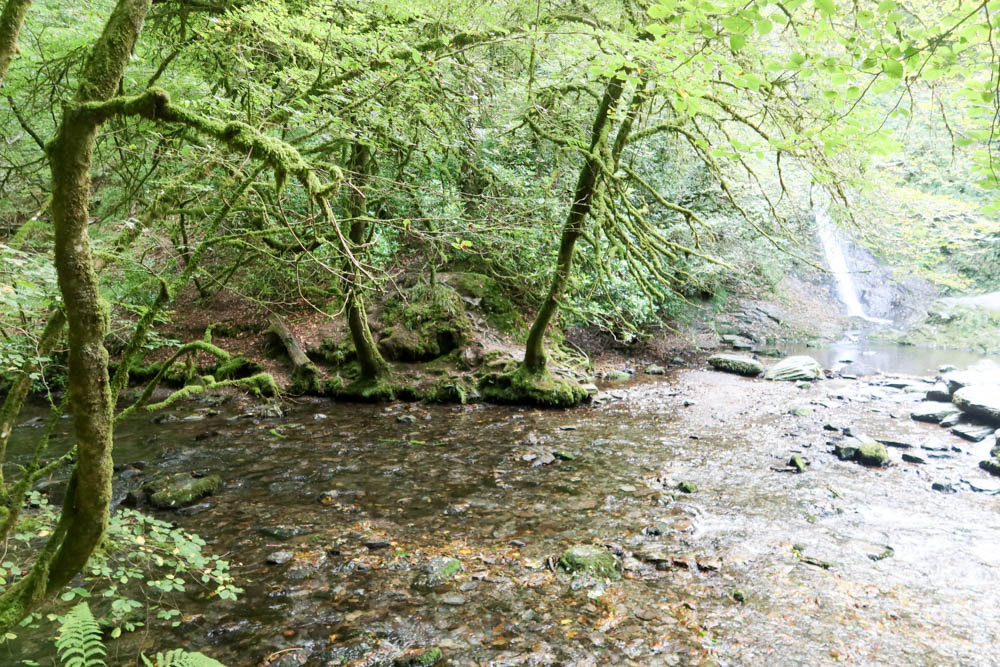
Although Dartmoor is most well known for its moorland (obviously), there are actually a lot of woods and waterfalls here.
Dartmoor is one of the only places in the UK where you’ll find temperate rainforest. Look out for trees and boulders covered in moss and a distinct humidity in the air.
There are countless charming waterfalls as well. Dartmoor sits at around 400 metres altitude on average, and a few rivers have their source here, winding through the park until they reach Devon’s coastline.
Here are some of the best woodlands and waterfalls!
Lydford Gorge

Spanning over acres of woodland, Lydford Gorge is the deepest in the country.
With the beautiful Whitelady Waterfall and a tranquil babbling brook amongst moss-covered trees, this is a wonderful place to go for a walk.
You’ll feel like you’re in another world as you hike around; it’s a totally unique place to visit in Dartmoor.
It’s owned by the National Trust. Members can get free entry (you can read more about membership here), or it costs £9.00.
Check out my Lydford Gorge guide here, or read about the best waterfalls in Devon here.
Becky Falls
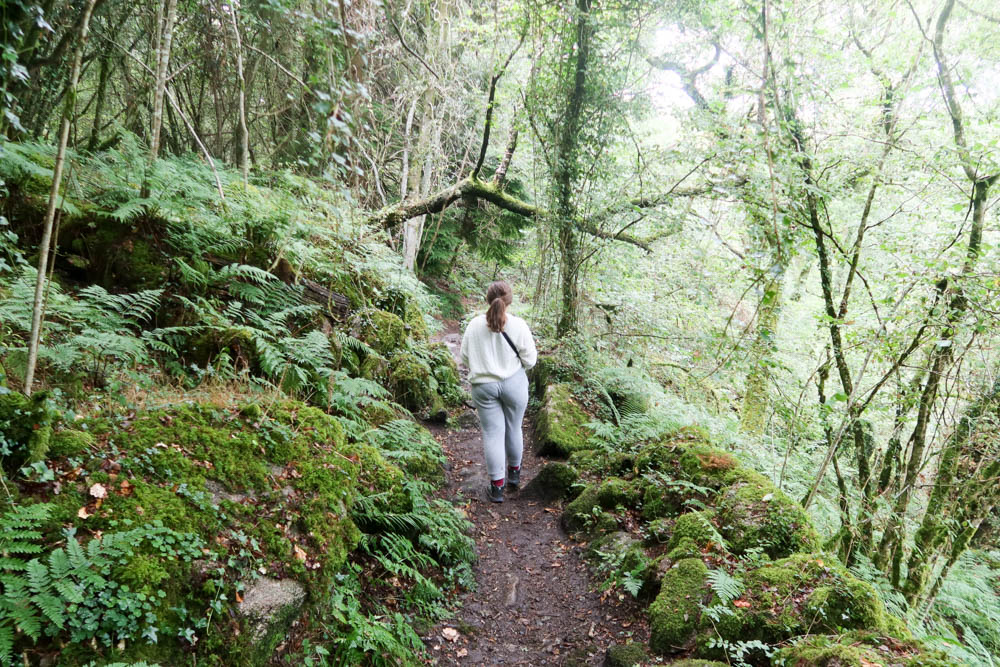
Becky Falls is a majestic woodland and waterfall area near Bovey Tracey. It actually occupies part of Bovey Woods.
With beautiful walking trails, a babbling brook and crashing falls, it’s a place of immense natural beauty.
It’s great for avid hikers, but also wonderful for families. There’s a children’s trail and animal petting area.
You’ll need to pay for entry, but it’s worth it to have the woodland to yourself.
You can see my full Becky Falls post here.
Wistmans Wood
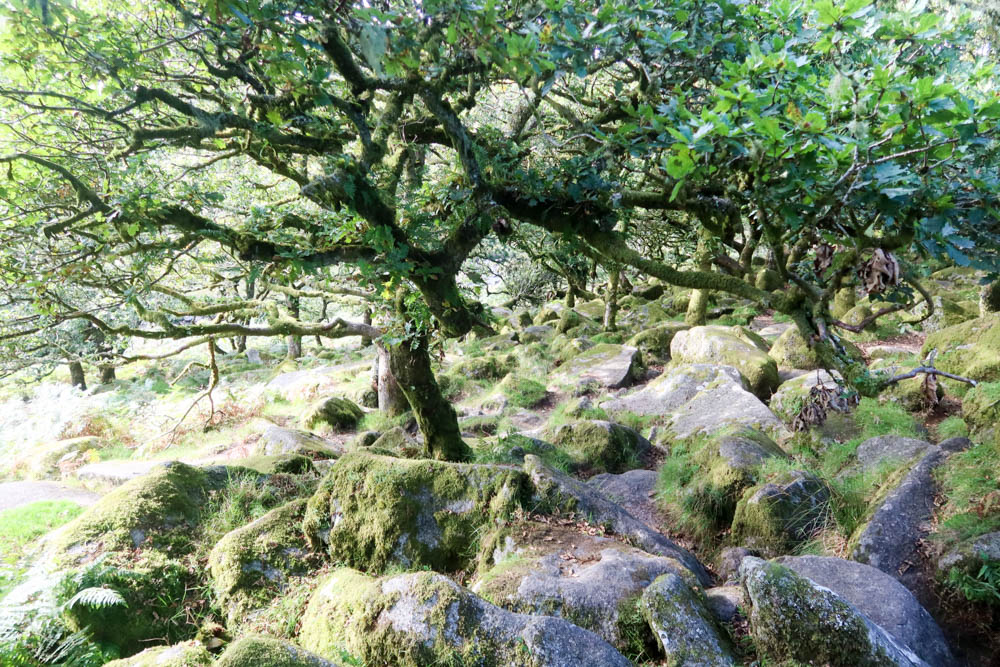
Located in the middle of Dartmoor, near Two Bridges, Wistman’s Wood is like Hogwart’s Forbidden Forest.
Dartmoor used to be covered in ancient woodland, but nowadays only small patches remain. One of these is the mystical Wistman’s Wood.
A half-hour walk from Two Bridges, Wistman’s Wood is a network of trees and a boulder-strewn carpet, all covered in moss.
It’s a completely unique place to visit, and a perfect photography spot!
Auswell Wood

Known as “The Lost World”, Auswell Wood is a small, less-visited woodland close to Widecombe in the Moor.
You can walk a small circular trail here, taking in the beautiful trees and low-hanging branches.
Also, check out Auswell Rocks, a historic stone circle close by.
Stroll around reservoirs
There are a few beautiful reservoirs close to Dartmoor.
These make lovely hikes when you fancy something a bit different to the rugged moorland!
Meldon Reservoir
Meldon Reservoir is close to Okehampton in the northern part of the moor.
It’s located in a beautiful valley, with lots of trails crisscrossing the area.
The reservoir itself is a great place for birdwatching, and it’s also a popular place for fishing.
Burrator Reservoir
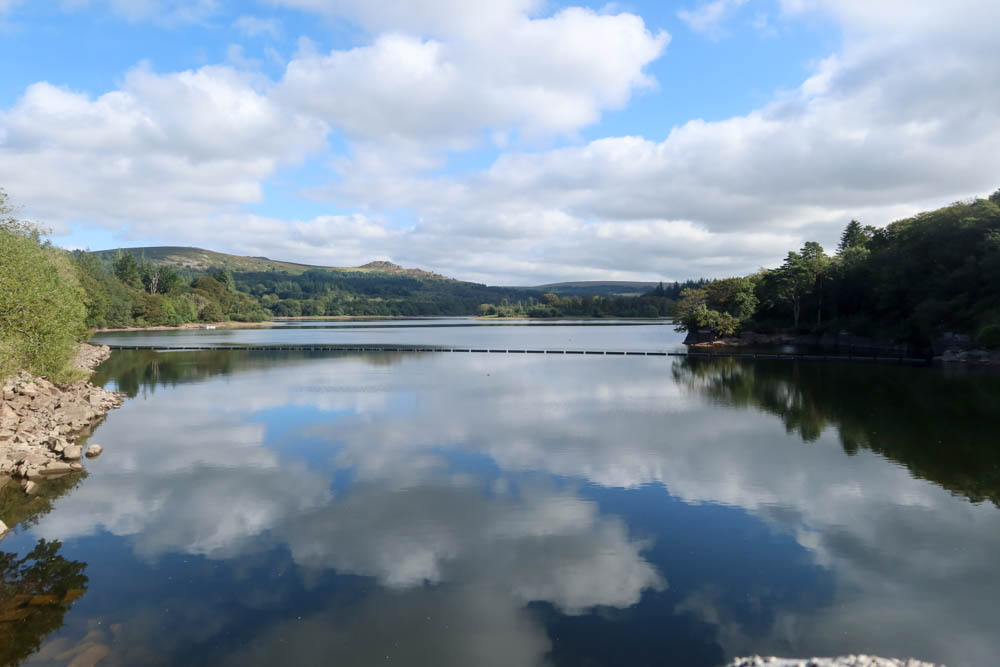
Situated close to Tavistock (and holding much of Plymouth’s drinking water!), Burrator Reservoir is a lovely place for a stroll.
The calm blue water juxtaposes the surrounding rugged Dartmoor scenery, and there’s a waterfall a little way around it.
You can also pop into the South West Lakes Trust Visitor’s Centre, which has valuable information about protecting and preserving the environment.
Mythical stone attractions
The ancient landscape of Dartmoor has been a place of myth and legend since the beginning of time.
Because it has still remained very wild (especially when compared to other British destinations), it retains many of its historic features, including a range of stone circles and monuments.
Some of these date back thousands of years.
Grimspound

Grimspound dates from 1450 – 700 BC, and consists of 24 stone roundhouse and a 150 metre high boundary wall.
You’ll see some incredible views of Hookney Tor from here too!
Bowerman’s Nose
Technically a tor, Bowerman’s Nose is a huge stack of rocks. It’s very remarkable and represents Bowerman the Hunter, which it was inspired by.
The legend of Bowerman is that he lived on Dartmoor and discovered a group of witches doing a ceremony.
Because he found them, the witches turned him into a stack of granite (Bowerman’s Nose) and his dogs into the rocks that are found on nearby Hound Tor and called “the clitter”.
Spinsters Rock

Spinter’s Rock is a random attraction found in the middle of a farmer’s field. You’re allowed to enter and look at the rocks, but be mindful of the sheep grazing as you walk through!
It’s thought that these rocks were part of an ancient burial chamber, and that there used to be soil surrounding them.
However, due to natural soil erosion, the rocks are the only thing that’s left. It’s thought to date back to 3,500 – 2,500 BC – so these rocks have been there a long time!
Historical Attractions
After you’ve gone way back in history, there are also some interesting more contemporary historical attractions in Dartmoor, including National Trust sites, Medieval bridges, and more!
Castle Drogo

Castle Drogo was constructed between 1911 and 1930 and was the last castle to be built in England.
It was the home of the Drewe family, although eventually passed into National Trust’s hands.
You can visit all of the rooms in the castle, see the manicured gardens, and explore the trails in the estate. There’s a poignant room devoted to the son who was lost in WW1 and some servant halls so you can see both sides of country living in the early 20th Century.
It’s a National Trust property, so members get free entry. Read more about National Trust membership here.
Buckland Abbey

Buckland Abbey sits to the west of Dartmoor National Park, in the Tavy Valley.
Dating back a whopping 700 years, it was once an abbey, then became a home after the dissolution of the monasteries.
Enjoy a medieval tithe barn and walk through history as you learn about Sir Francis Drake, who once lived there.
Nowadays, there are historical features, fascinating exhibits and beautiful gardens to stroll around.
Again, it’s National Trust, so if you’re a member, you can enter for free.
(Side note: We renewed our National Trust membership for a year just before visiting Dartmoor this year and made our money back in a week, just by visiting loads of sites in the area! Read my National Trust membership review for more information)
Lydford Castle
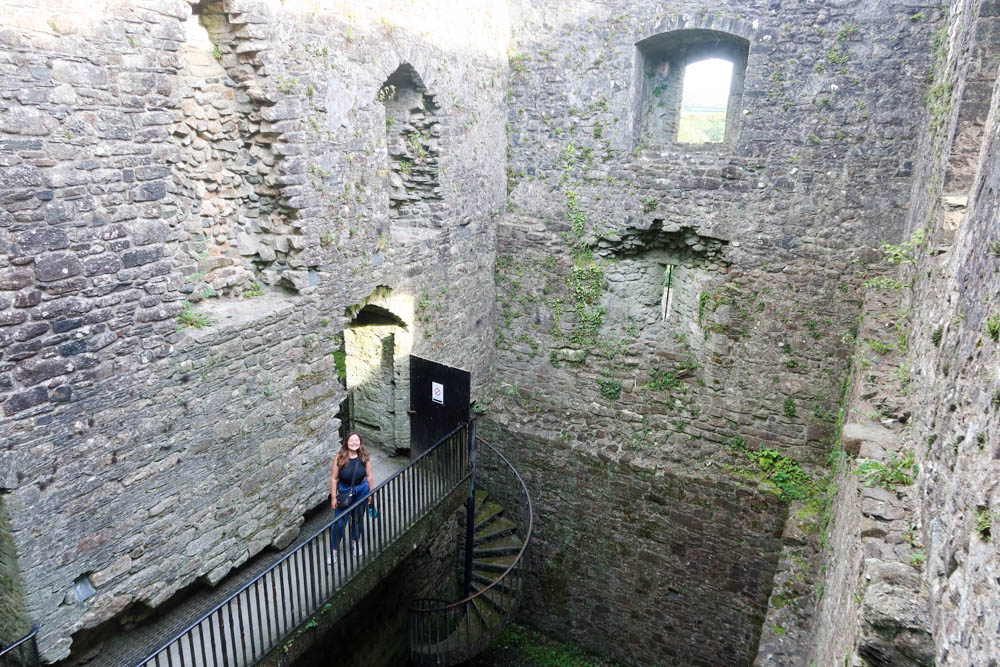
Lydford Castle sits close to Lydford Gorge, in the village of the same name.
It was built in the 12th century and housed stannary prisoners; these were prisoners who broke stannary laws.
These laws involved the tin industry in Devon and Cornwall and were overseen not by the monarch in London, but by wardens in the West Country.
It was an infamous place that carried out many harsh punishments and served as a prison until the 18th century.
Nowadays, it still stands and you can enter and explore for free. It’s small and empty, but it’s worth visiting to admire the architecture!
You can see all of the best things to do in Lydford here.
Postbridge Clapper Bridge

Postbridge Clapper Bridge dates back to Medieval times, most specifically probably the 13th century.
This rustic bridge is made of granite and consists of two columns with three large slabs (or clappers, hence the name), that span its distance.
It’s thought that, before this bridge, there were stepping stones. The bridge was built to accommodate packhorses that needed to cross the water.
There’s also a late 18th-century bridge spanning over the same area of the river. This bridge is still used today for traffic – it’s on the main road going through Postbridge.
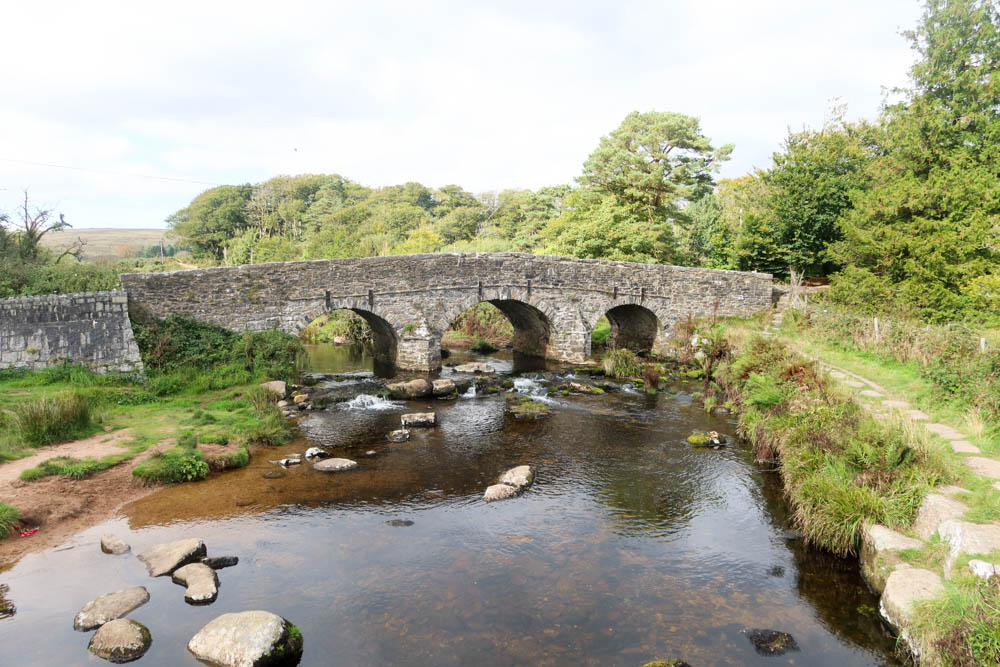
Fingle Bridge
Spanning over the River Teign, close to Fingle Woods and Castle Drogo, Fingle Bridge probably dates back to the 17th century, although there may have been a bridge here much earlier.
This is a beautiful part of Dartmoor, with a tranquil forest and a bubbling river. There are some lovely walks that you can do around the Teign Gorge too!
Animal sanctuaries/ attractions
As it’s such a wild place, it’s no surprise that there are plenty of animal-focused attractions in Dartmoor!
However, I try to not advertise any animal attractions that don’t have the animals best interests at heart, so I’ve kept this section small.
Dartmoor Otter Sanctuary
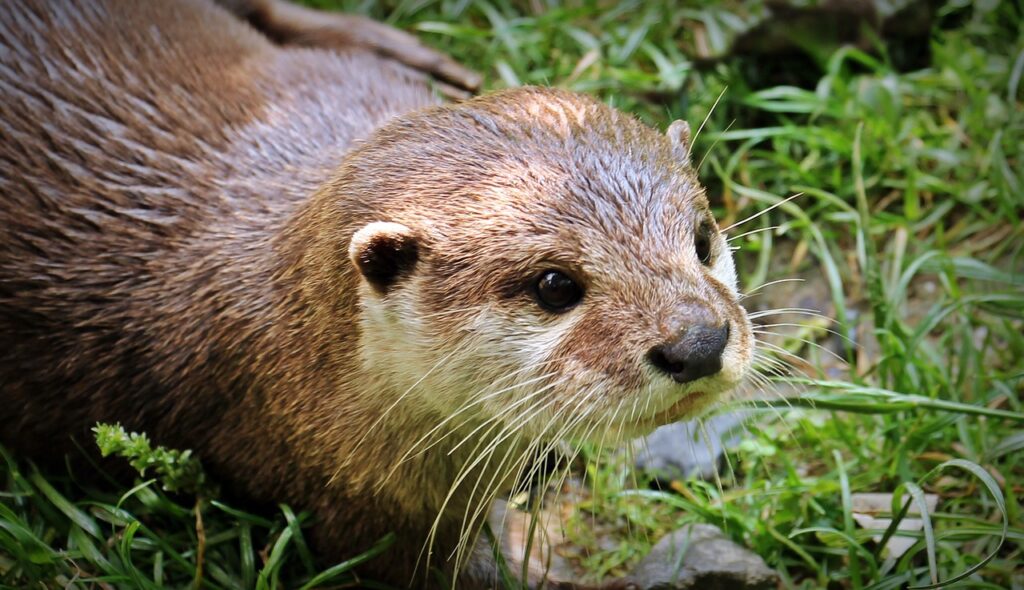
The Buckfast Butterflies and Otter Sanctuary is a South Devon family attraction. The Buckfast Butterflies part of the sanctuary is a haven for butterflies, and there are lots of different breeds that you can see when visiting.
The Otter Sanctuary rescues and rehabilitates orphaned or injured otters. You can visit them and see them at different stages of the process.
When the otters are strong enough, they’re released back into the wild.
Dartmoor Miniature Pony Centre
The Dartmoor Miniature Pony Centre is a popular attraction with families.
It’s home to lots of miniature ponies, goats, poultry and more.
As I mentioned, I’m normally a bit wary of animal attractions. However, this centre has a large section on its website dedicated to animal welfare, detailing exactly how they keep their ponies happy and healthy.
I’ve also reached out to the centre to see if they have any more comments they want me to post on here.
Historic market towns and quaint villages
Dartmoor is a largely wild place, but it’s dotted with charming villages, with some larger towns around the outskirts. All of these settlements have their own appealing attractions.
Okehampton
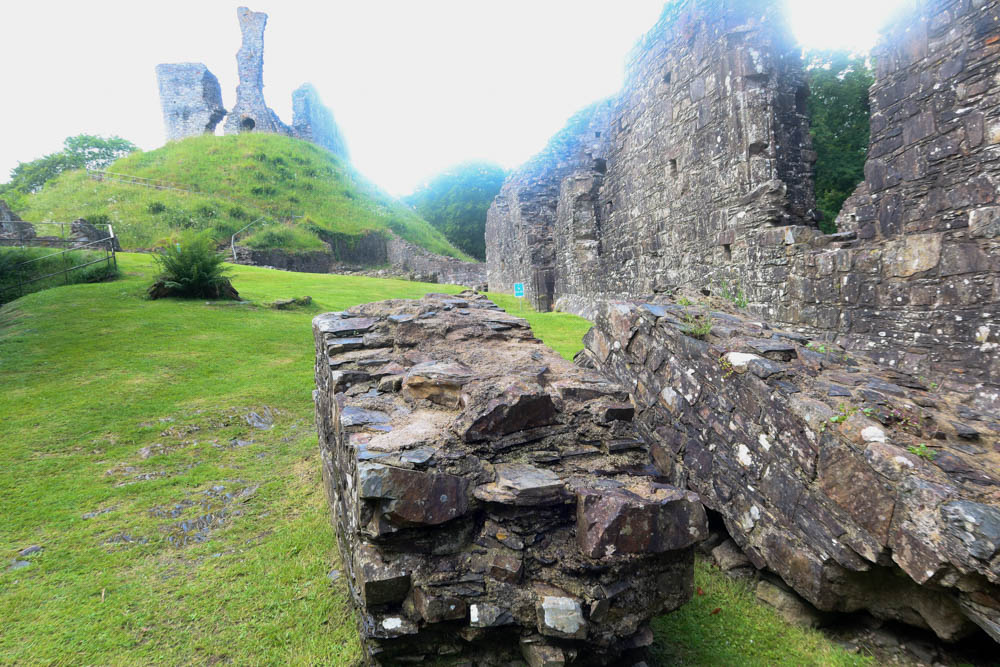
Okehampton is one of the biggest towns around Dartmoor, dating back to the Saxon age.
Okehampton Castle is a must-visit while you’re in town. Dating back to the 11th century, it was used by Hugh Courtenay who was the Earl of Devon.
The town then built up and prospered due to the woolen cloth industry, and some of the buildings that were built during this time are still standing today.
Once you’ve enjoyed the castle, stroll through the town and head to the Museum of Dartmoor Life, which details everything you need to know about this interesting part of the West Country!
See my full guide to Okehampton here.
Tavistock
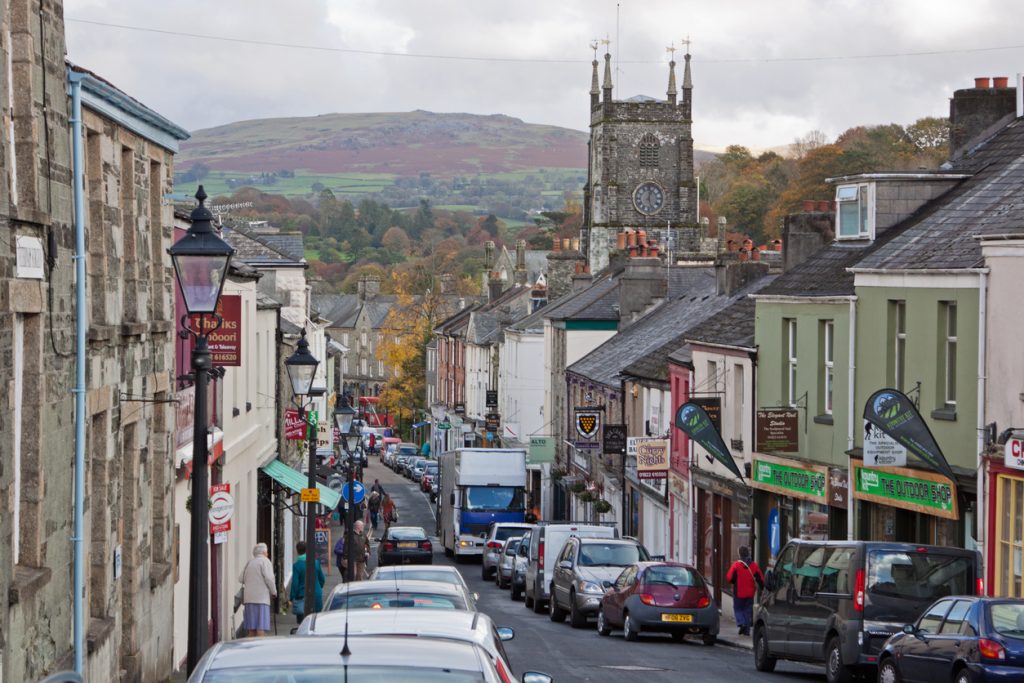
Tavistock is one of the most beautiful towns in Devon.
With outstandingly beautiful historic buildings including the elegant town hall and intricate church, Tavistock is a small place, but it has plenty to offer tourists.
Once you’ve finished strolling around the town, you can visit the pannier markets or try out an independent restaurant for lunch.
Widecombe in the Moor
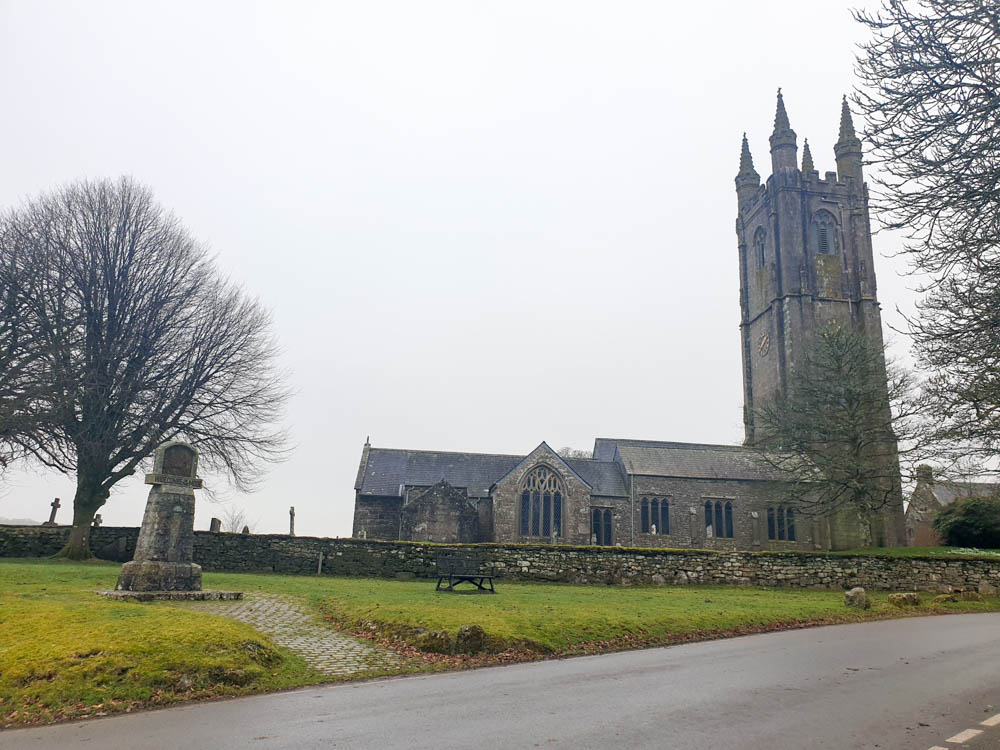
There are lots of charming villages in Dartmoor, but Widecombe is among the best.
It is quite literally in the middle of the moor. You’ll be driving along the country road for a while before seeing it in front of you, tucked away – and all of a sudden, you’ll reach the village centre.
It’s a beautiful place, wrapped in a cloak of mystery due to its moorland location, but there’s not too much going on here. However, it’s worth visiting to enjoy the village atmosphere, and there are a few great pubs.
Lustleigh

Lustleigh is one of the prettiest villages in all of Devon.
Known for its thatched-roof cottages, Lustleigh is a small place with a popular pub and a tea room serving delicious scones with Devon clotted cream.
You won’t need long to explore – but it’s a fantastic place to stop for a refreshment while you’re driving around the moorland.
Chagford
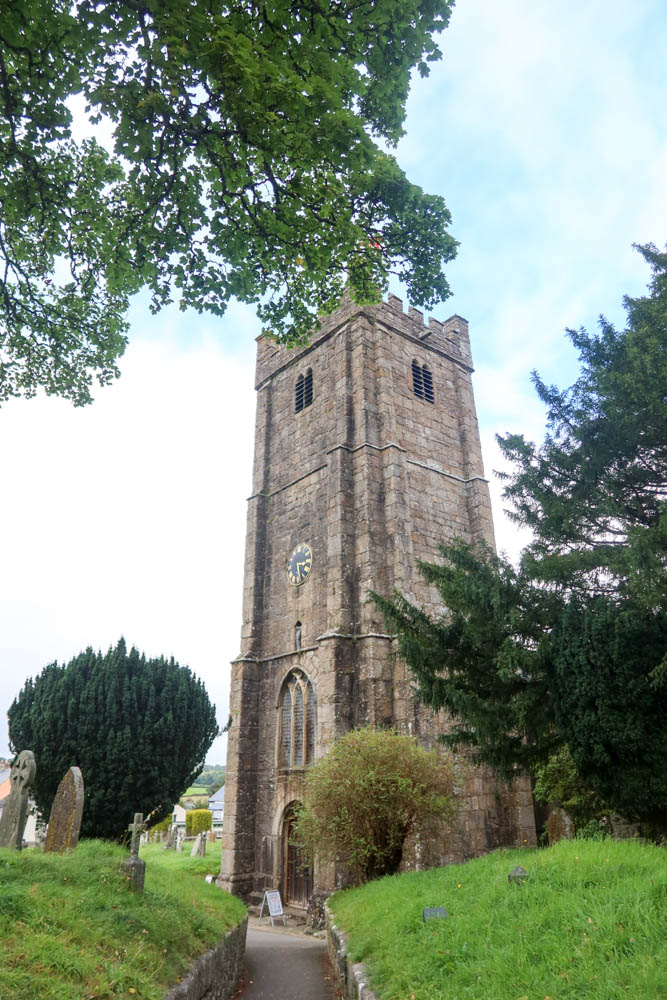
With lots of independent shops, Chagford is one of the larger settlements in Dartmoor.
There’s a stunning historic church, trendy cafes and some fantastic charity shops.
Myself and my partner both picked up some gorgeous new clothes from here!
The buildings date back to an era long gone, and it’s a beautiful place to walk down the streets and soak in the history.
Moretonhampstead
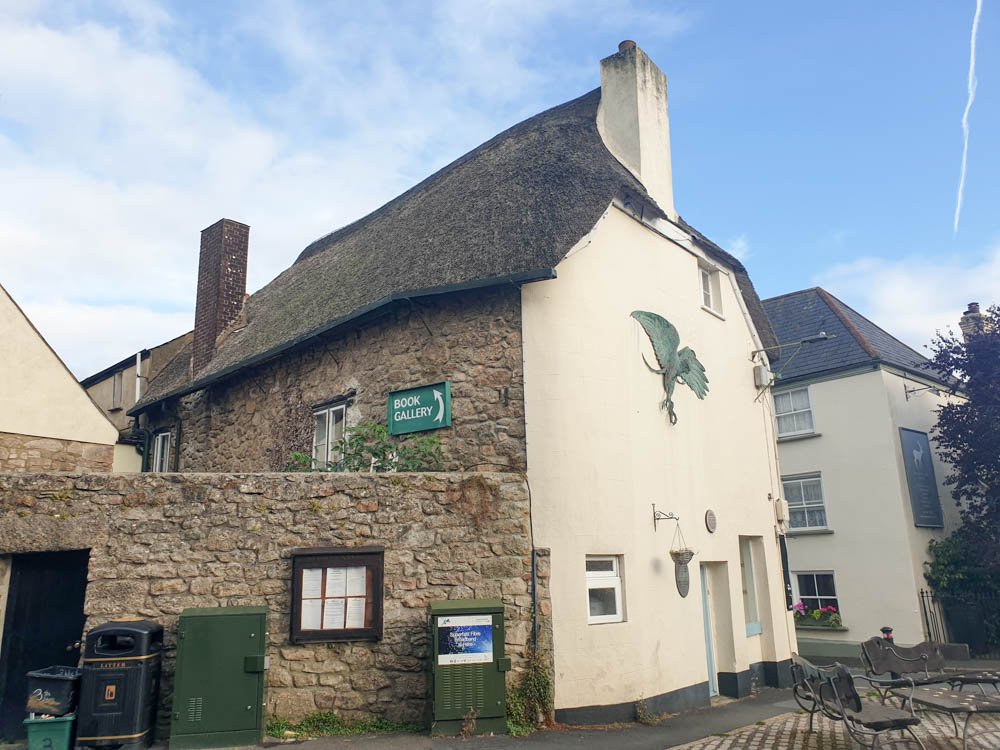
Like Chagford, Moretonhampstead is a larger Dartmoor settlement with a community atmosphere and a few decent restaurants.
We loved the friendly vibe of this town; it’s a pleasant place to pop into for a coffee or a meal, and we had a nice stroll around too.
We thought it would be good place to stay for a few days while seeing the attractions in northern Dartmoor!
Other interesting attractions
There are yet more things to do in Dartmoor! This section features a few more interesting attractions to look out for while you’re exploring.
Buckfast Abbey

Sitting in Buckfastleigh, Buckfast Abbey is a beautiful abbey that’s home to a group of Benedictine monks. The church is open for visitors from 7:45 am to 8:00 pm every day (7:00 pm on a Sunday).
There are also shops, gardens, a restaurant and a range of accommodations. Enjoy the feeling of serenity as you stroll around and learn about the historical significance of the abbey.
It also has a slightly unorthodox side – it’s the first place where the internationally-renowned Buckfast fortified wine was made!
House of Marbles
Located in Bovey Tracey, the House of Marbles is one of the best things to do in Dartmoor in the rain.
It’s a homage to all things marbles, from gorgeous glassware to intricate marble runs. Learn how the glassware was made and try out the marble runs for yourself!
You can, of course, purchase marbles to take home with you as well.
If you’re looking for rainy day activities in Devon, here’s my full list.
Dartmoor Prison Museum
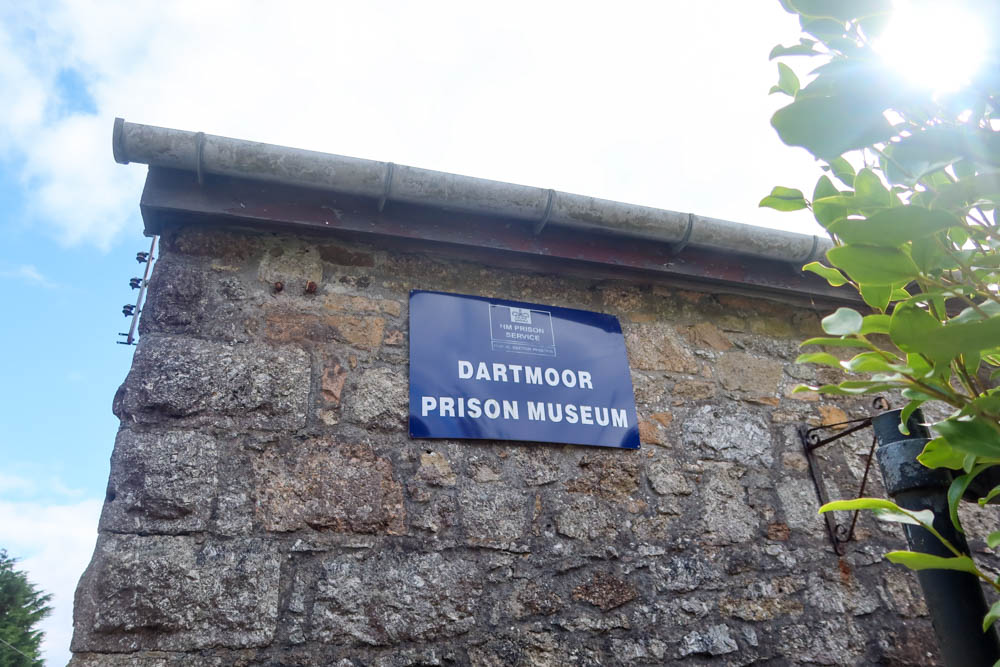
Located in Princetown, Dartmoor Prison Museum details what life is like in one of the UK’s most notorious prisons.
The prison is a Category C Men’s Prison, and it’s located in the middle of Dartmoor to combat any escape attempts. It’s easy to get lost when you’re in the middle of the moor…
Historically, it was created in the Napoleonic Wars for French prisoners. At the time, prisoners were held in the ships in Devonport, in awful condition. They decided that, for everyone’s safety, it was best to build a prison in the isolation of Dartmoor.
From 1812, American prisoners joined those serving time at Dartmoor Prison Museum.
It’s developed an infamous reputation over the years of being one of the hardest and toughest prisons in the UK.
Nowadays, it houses category C prisoners; which is one step higher than open prison. These prisoners can’t be trusted in regular open prisons, but they also haven’t shown much of a desire to escape.
For obvious reasons, you can’t visit the actual prison. However, the Dartmoor Prison Museum is across the road, costs £5 to enter, and is well worth the look.
Back in town, you’ll find a fantastic Dartmoor National Park Visitor Centre which will give you even more information on visiting the moors.
Ashburton Antique Shops

Ashburton is a beautiful South Dartmoor town that’s somewhat renowned for its antique shops.
You can do a tour of these antique shops, finding hidden treasures and excellent bargains.
However, it’s also worth visiting the charity shops in Ashburton, where you can snag a new wardrobe for budget prices.
Just walking around the town, you’ll see beautifully coloured houses and gorgeous Dartmoor scenes in the background.
Ashburton Cookery School
If you’re looking for things to do in Dartmoor in the rain, why not attend the Ashburton Cookery School?
This is one of the most popular cooking schools in the country, offering classes for all skill levels from novice to semi-professional. Courses include breadmaking, chocolate making, Italian cooking and Indian cooking.
You can take half-day or full-day sessions, or opt for even longer courses. You can even stay in the cooking school!
The Highwayman Inn
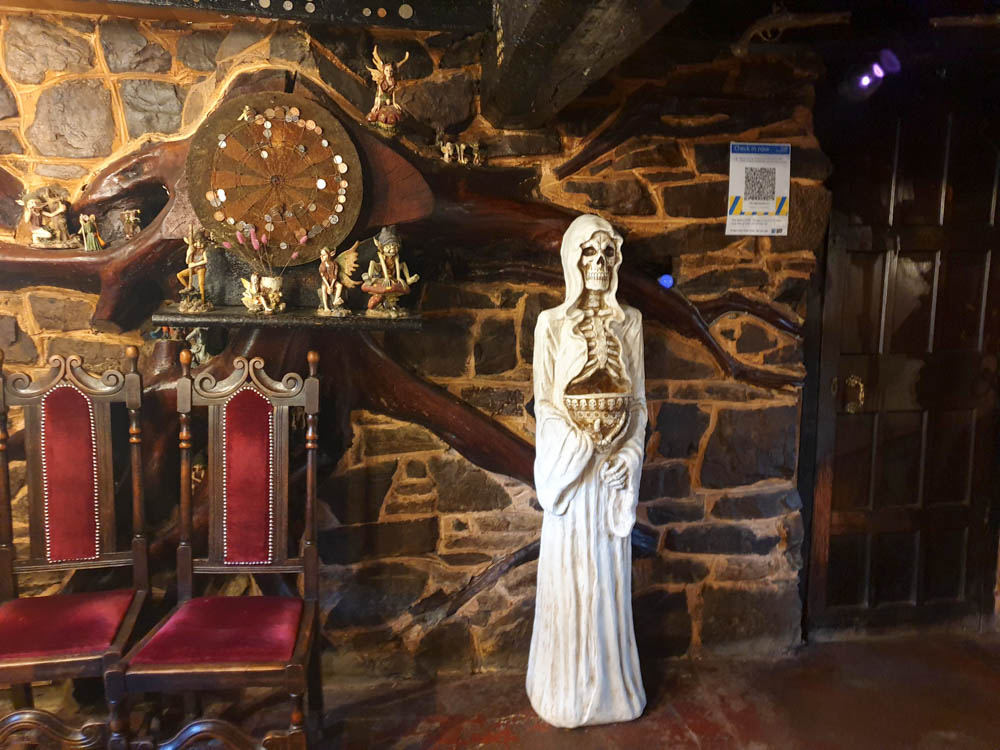
The Highwayman Inn is definitely a must-visit in Dartmoor! It’s part pub, part museum, with memorabilia from all over the world in its many rooms. Our favourite was the area that’s decorated to look like a historic ship!
Dating back to the 13th century, it was a coaching house and community hub and became an inn called “The Golden Fleece” in the 17th century.
Its name was later changed to “The New Inn” as a modernisation effort. Its current name, “The Highwayman Inn” is after a poetic notion of highwaymen rushing around on the moor.

From the quirky front door which represents a carriage, to the massive shoe out the back, to the bare brick decor with all sorts of heirlooms hanging from the ceiling; if you’re a fan of the weird and wonderful, you’ve got to visit this pub!
Bookings are essential. You can reserve your spot here.
4×4 Driving
Being one of the most rugged places in the UK, and probably the wildest destination in England, Dartmoor is a fantastic place for 4×4 driving.
However, due to the unique nature of Dartmoor National Park, you can’t go driving on your own around the park, even if you have a four-wheel-drive car.
Instead, you can book a tour on Viator.
Hiking
It goes without saying that hiking is one of the best things to do on this dramatic moor!
There are so many Dartmoor walks, I could write a book about them (in fact, there have been plenty of books created about that very topic!).
I’ll create a few full blog posts about hikes in the area soon, but here are some of the best that you should check out if you’re looking for things to do in Dartmoor!
- Meldon Viaduct Circuit: This is a 4.5 mile route encompassing Meldon Reservoir and Viaduct, as well as some of the best scenery of northern Dartmoor.
- Hound Tor Circular Walk: This route passes through Hound Tor and Lustleigh. It’s over 12 miles in total, but there are plenty of shortcuts if you want to walk less.
- Yes Tor and High Willhays: This is an eight mile hike up the second highest tor of Dartmoor and around the surrounding landscape.
Cycling and Mountain Biking
With miles of trails, Dartmoor is a wonderful place for cycling and mountain biking.
Cycling trails range from the old railway to the Princetown and Burrator Route. You can see some of the best cycling routes here.
Where to stay in Dartmoor
YHA Dartmoor, Postbridge: This is a rural hostel with dorm rooms or private quadruple rooms, perfect for groups of friends or families. Perfect for a budget stay, you can use the kitchen for cooking or enjoy the on-site restaurant. There are plenty of hiking and biking trails around the local area – this is the heart of Dartmoor, after all! You’ll be near the beautiful clapper bridge and also in close proximity to places near Pricetown.
The White Hart Hotel, Moretonhampstead: This is a gorgeous pub with rooms, with four-poster beds and matching bedspreads and curtains. The pub downstairs serves tasty food, and Moretonhampstead is a great destination close to many of Dartmoor’s best attractions but in good proximity to restaurants and pubs.
The Bedford Hotel, Tavistock: The Bedford Hotel is located on the edge of Dartmoor, named after the Duke of Bedford. Located in a historic building, it has a wonderful restaurant that has been awarded an AA Red Rosette. Of course, you’ll be in the beautiful town of Tavistock as well.
Two Bridges Hotel, Two Bridges: This hotel has classic yet comfortable rooms, fitted with all the mod cons you’ll need. This is the only hotel in this otherwise isolated area, but here’s a great AA Red Rosette award-winning restaurant and you can easily walk to Wistman’s Wood, one of the best temperate rainforests in the area.
Bovey Castle: This luxury hotel dates back to 1930, when it was a hotel and golf resort. It sits in 275 acres of grounds. There are 60 deluxe rooms in the hotel, along with 22 self-catering cottages. Enjoy the 18 hole course, lunch at the opulent Smith’s Brasserie or the wonderful Great Western Restuarant.
Boringdon Hall: This luxury hotel sits on the edge of Plymouth, a short drive to the western part of Dartmoor. It’s famous for its luxurious Gaia Spa (you could spend all day here – I did once!) with two steam rooms, two saunas, a swimming pool, hydrotherapy pool and treatment rooms. The hotel rooms are no less luxurious, with comfortable beds and luxury toiletries. And the property is incredibly interesting – it dates back hundreds of years and has had famous guests like Sir Walter Raleigh and Queen Elizabeth I!
When to visit Dartmoor National Park

Dartmoor is excellent in all seasons.
It’s busiest in the peak summer season, and due to the lack of shade in some parts, it can be intense on hot summer days. If it’s really warm, head to the shadier areas like Becky Falls or Lydford Gorge.
Autumn and Spring are particularly nice, with cool weather for hiking and crisp sunny days. In autumn, enjoy orange, red and yellow leaves and in the spring, beautiful wildflowers bloom.
Dartmoor can be foreboding during the winter months, especially on particularly wet and windy days. However, it’s much quieter and it’s beautiful on a sunny winter’s day.
It’s most advisable to check the weather forecast before visiting Dartmoor National Park, whatever the season, and to base your trip on the weather conditions.
If the weather is bad, don’t head out onto the open moorland or the tors; but it’s still worth visiting the Dartmoor towns and villages or the mystical forests.
How to get to Dartmoor
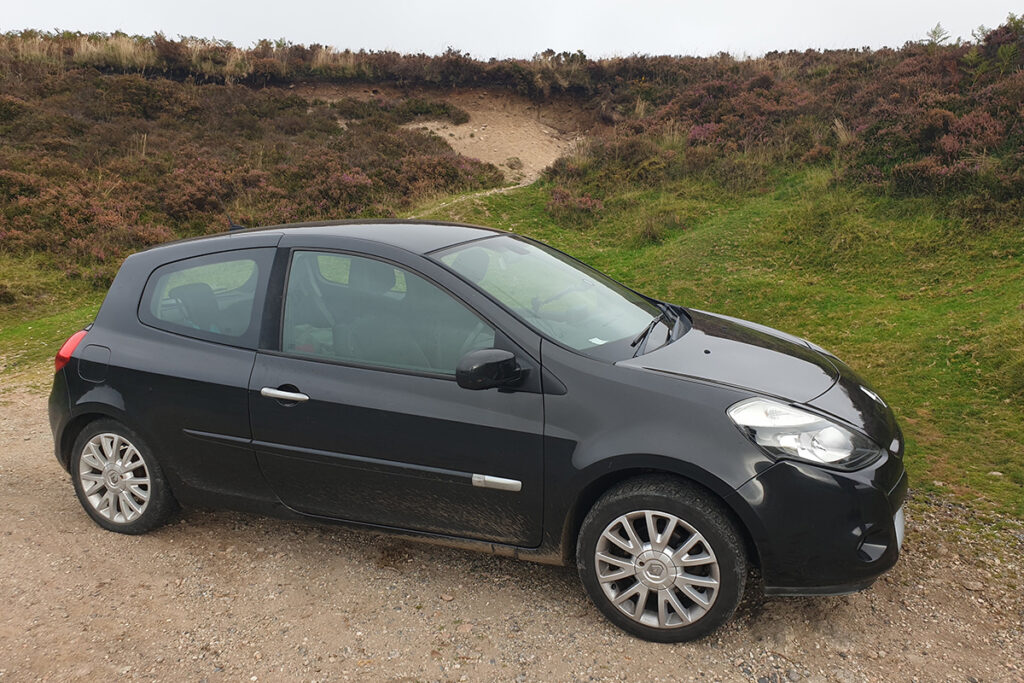
The best way to get to Dartmoor is by driving. It’s a fantastic place to road trip around!
It’s quite tricky to get to Dartmoor by public transport, but you can take a train to Newton Abbot.
From here, take the Haytor Hoppa tourist bus service to many of Dartmoor’s attractions, including Bovey Tracey, Widecombe and Becky Falls.
Does Dartmoor have a beach?
No, Dartmoor doesn’t have a beach, as it’s all located inland. However, the south part of Dartmoor isn’t far from Torbay towns.
For example, Buckfastleigh is a 25 minute drive from Paignton. On the other side of Dartmoor, Okehampton is a 40 minute drive from Bude in Cornwall.
Is Dartmoor worth visiting?
Yes, Dartmoor is without a doubt worth a visit.
There’s something for everyone here; from adventurous activities like four-wheel driving, to hundreds of walks, to wildlife-spotting to enjoying some of the best Devonshire cream teas in Dartmoor’s towns and villages, I guarantee that you’ll love this National Park.
It’s a great place to visit on a budget too, as you can do a lot of it for free. But there are also some incredible spa hotels to soak in after a busy day’s exploring.
There’s something for everyone in gorgeous Dartmoor!

